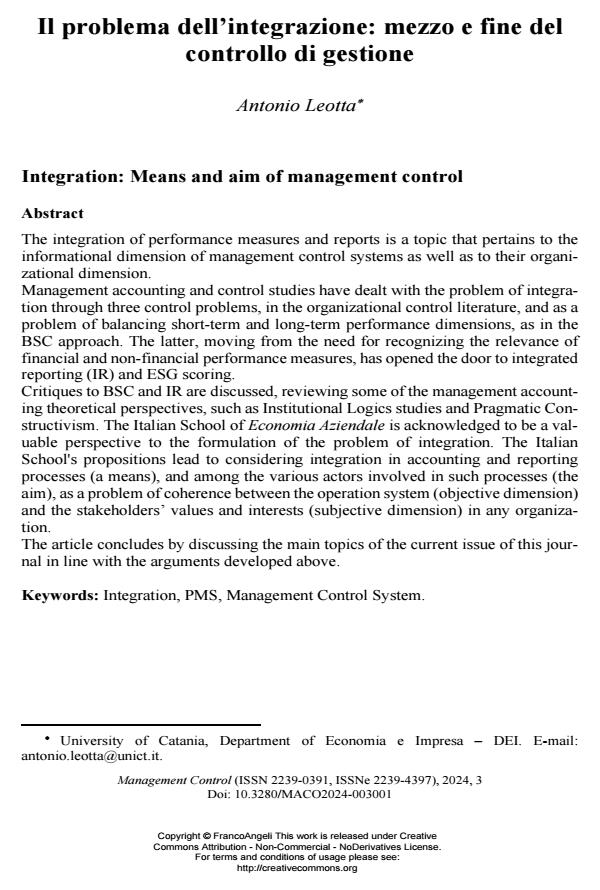Integration: Means and aim of management control
Journal title MANAGEMENT CONTROL
Author/s Antonio Leotta
Publishing Year 2024 Issue 2024/3
Language Italian Pages 10 P. 5-14 File size 65 KB
DOI 10.3280/MACO2024-003001
DOI is like a bar code for intellectual property: to have more infomation
click here

FrancoAngeli is member of Publishers International Linking Association, Inc (PILA), a not-for-profit association which run the CrossRef service enabling links to and from online scholarly content.
The integration of performance measures and reports is a topic that pertains to the informational dimension of management control systems as well as to their organ-izational dimension. Management accounting and control studies have dealt with the problem of inte-gration through three control problems, in the organizational control literature, and as a problem of balancing short-term and long-term performance dimensions, as in the BSC approach. The latter, moving from the need for recognizing the rele-vance of financial and non-financial performance measures, has opened the door to integrated reporting (IR) and ESG scoring. Critiques to BSC and IR are discussed, reviewing some of the management ac-counting theoretical perspectives, such as Institutional Logics studies and Pragmat-ic Constructivism. The Italian School of Economia Aziendale is acknowledged to be a valuable perspective to the formulation of the problem of integration. The Italian School's propositions lead to considering integration in accounting and re-porting processes (a means), and among the various actors involved in such pro-cesses (the aim), as a problem of coherence between the operation system (objec-tive dimension) and the stakeholders’ values and interests (subjective dimension) in any organization. The article concludes by discussing the main topics of the current issue of this journal in line with the arguments developed above.
Keywords: Integration, PMS, Management Control System.
- Dalla misurazione dell'outcome a quella dell'impact: la Sentiment Analysis a supporto della valutazione della performance delle aziende sanitarie pubbliche Christian Di Falco, Guido Noto, Gustavo Barresi, in MANAGEMENT CONTROL 2/2025 pp.157
DOI: 10.3280/MACO2025-002008
Antonio Leotta, Il problema dell’integrazione: mezzo e fine del controllo di gestione in "MANAGEMENT CONTROL" 3/2024, pp 5-14, DOI: 10.3280/MACO2024-003001